Limia

The name "Limia" is derived from the latin word "Limus", which means mud. Referring to the feeding habits of these fish.
Most limias originate from Central America and occur in fresh and brackish waters with an average hardness of 20 - 40 dH. So, if one is to combine limias with other fish be sure those other fish withstand the hardness which limias need in a biotope. Limias are considered being good algae eaters (even the rigid algae).
In general, they're peaceful and will hardly chase their fry.
Limia nigrofasciata
Below we have a black-barred limia or also known as humpbacked limia (Limia nigrofasciata). This livebearer is found in brackish, shallow waters in Haiti in Lake Miragoâne. They size up to approximately 6,5cm. It's a very friendly fish and quite hardy as well.
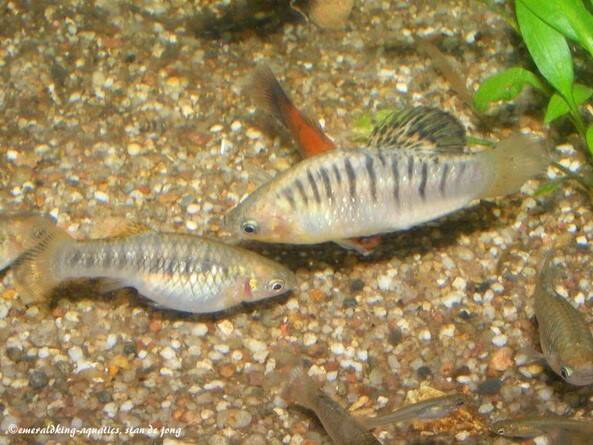
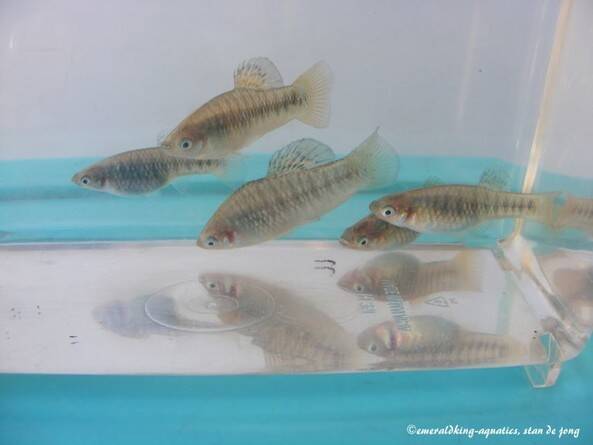
Above: An adult couple (photo left) → (♀) left, (♂) right. And a small group of adult Limia nigrofasciata (photo right)
When the male ages the hump on his back will become larger...
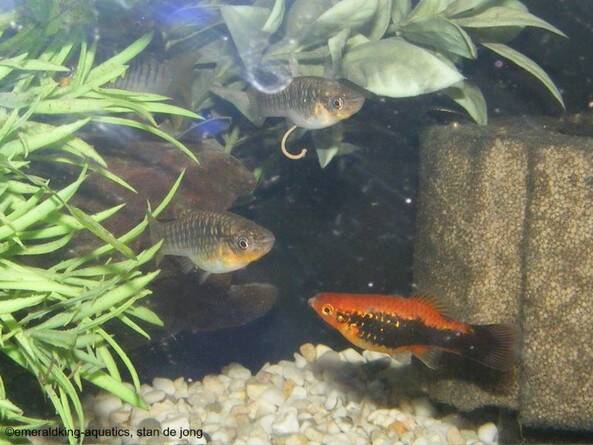
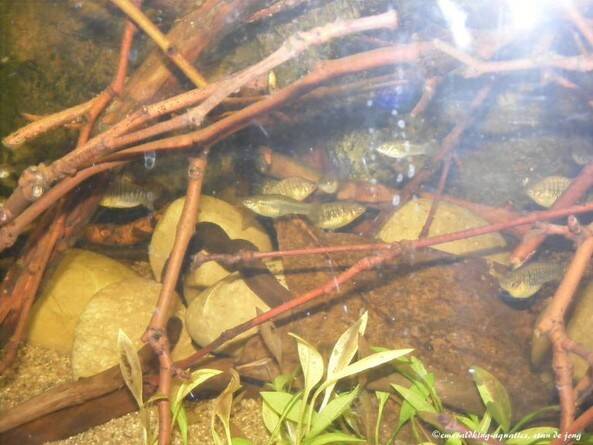
They don't tend to have a large number of fry in general.
Limia vittata
This species is also known as Cuban limia.
These limias originates from Cuba and occur in mangrove swamps, coastal lagoons, steams, lakes and estuaries. But this species also occurs on Isla de Juventud. And they inhabit both still and fast flowing freshwater and brackish water. With a margin of 18°C - 26°C water temperature they are happy fish. And it's a friendly fish by any means as well... so, it would make a good tank mate to other friendly fish.
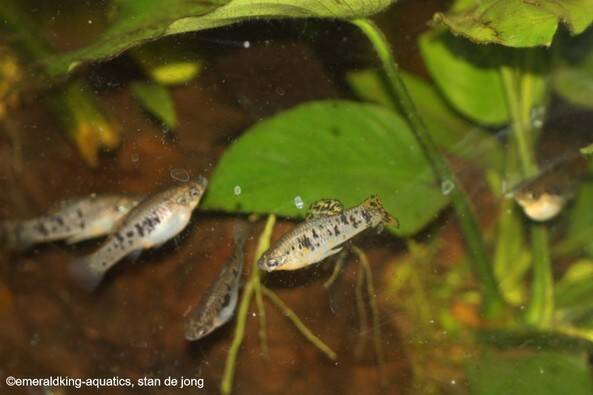

They're grayish with silver sides and a white belly. They've got a fishnet pattern on their sides covered with black speckles. A certain amount will show some bronze, yellow or blue markings as well. Black markings on clear fins do occur with both genders but males do tend to have more fin markings. Males size up from 4cm to 8cm and females from 5cm to 10cm. So, also with this strain, the females tend to get a bit larger.
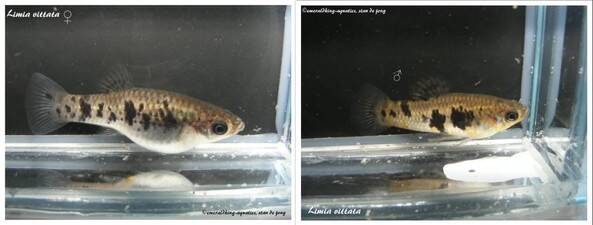
Above: An adult female (photo left) and an adult male (photo right)

After 4 - 6 weeks of gestation, 20 -100 fry will be born, depending on the size of the female. Note that these limias tend to reproduce themselves easier when salt is added to the tank.
Limia melanogaster
This livebearer is also know as Black-bellied limia or Blackbelly limia and is originated from Haiti and Jamaica. On both islands they occur in the top layers of streams where the water rates fluctuate from 20°C - 30°C. The name "Black belly" refers to the remarkable large spot of the females. Males don't show that much black on their bellies till none.
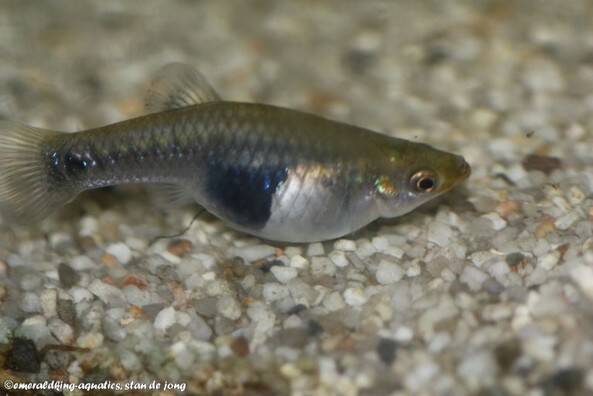
Above: An adult female with the typical large gravid spot.
Right: An adult male.
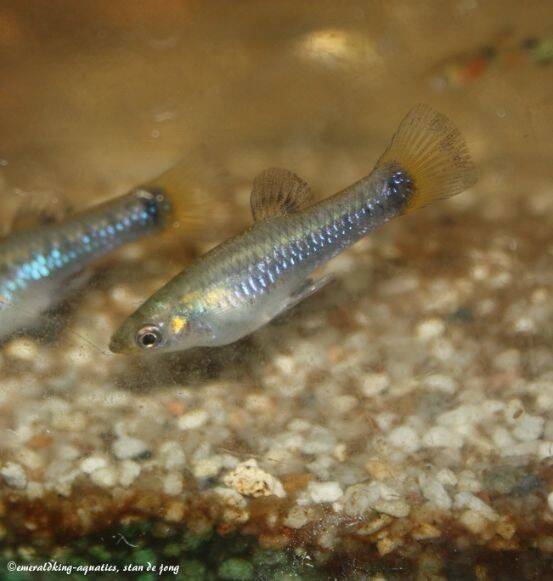
It's a peaceful fish which breeds pretty easy. After a gestation of 6 - 8 weeks birth wil be given to approx. 10 - 30 fry.
Below: Limia melanogaster fry.
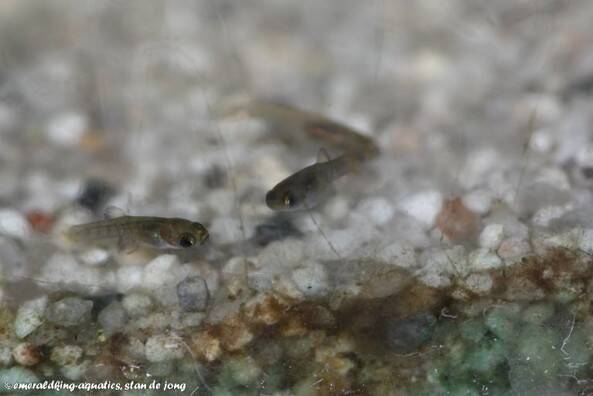
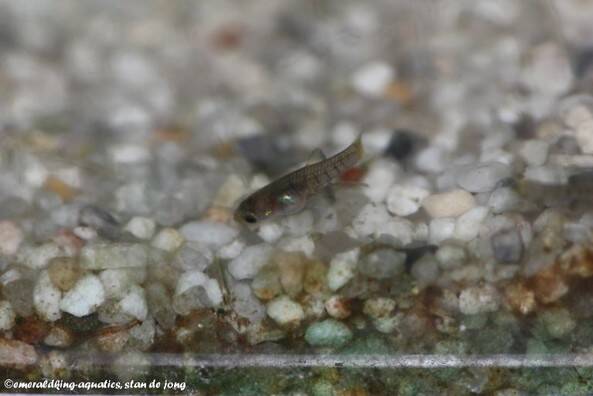

It's a brown-grayish bodied livebearer with vertical bars running over their bodies. Males tend to get darker and even a bit bluish when they get excited. They reach up to 7cm max (this goes for females, males will reach up to 5cm).
Limia perugiae
This livebearer is also known as Perugia's Limia and is to be found in streams in central Dominican republic. It's a Limia species with a lot more metallic shimmer unlike most Limia species. When the light shines on their bodies, a spectrum of blue and green pops up. Some also have an orange shine in their caudal fin. The color shimmer difference in specimens has got to do with the locations of where they occur. There are females that have a black marking in their dorsal but also females that have a clear dorsal fin, while the males will have always a black mark in their dorsal.
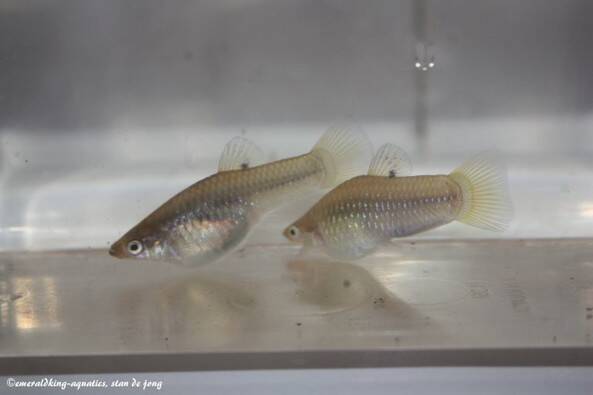

Above: Some fry of the Limia perugiae swimming in the open (photo right).
Another difference between male and female is that males tend to get a hump on their back when they age. Just like the Limia vittata, Limia perugiae are considered being the bigger sized limia strains. Females tend to size up to max 10 cm while males tend to grow up max 7 cm.
But not all males will become giants. Those who will become larger sized are the dominant males. Also a darker coloration is at hand with dominant males. Having multiple males in one group doesn't mean war in the tank. The smaller males will hardly get a chance to mate with the females. In general that will be the job of the dominant males.
There are three different sized (giant, medium and small) males of the Limia perugiae. Mother Nature has taken care of this phenomenon to ensure the population to survive. So, if giant males are lacking in the colony, smaller ones (early males or normal sized males) will take care of mating with females. But it's also a fact that all male offspring of one of these different sized males, will have the same adult size and build of the father. But in general, just the bigger (giants) males will take care of mating with females. Because in captivity bred specimens are smaller in numbers than in the wild, mostly the giant males will only mate with the present females. This results at some point in a group of this species where only giant male offspring will develop.
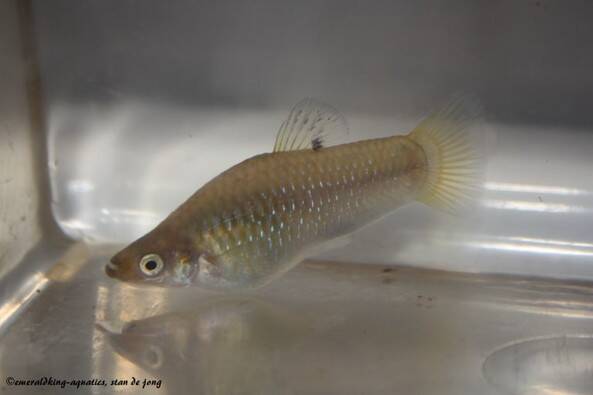
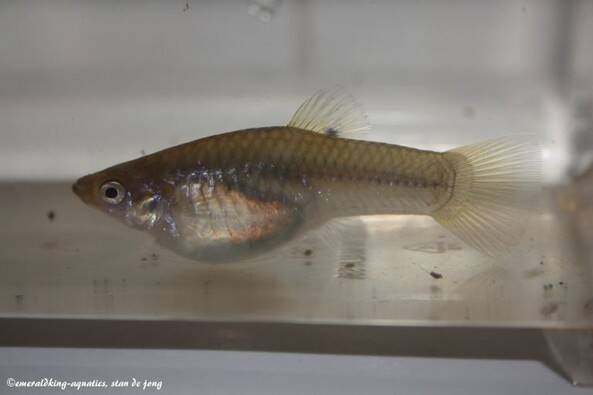
Above: An adult male (photo left) and an adult female (photo right).

Above: When the light hits the scales, a beautiful blue shimmer will appear.
Limia tridens
This livebearer is originated from western Haiti where it inhabits slow flowing waters.
In the past this species was referred to as "Limia dominicensis" (Evermann & Clark. 1906). It wasn't until many years later that it became clear that it was a different species. And this species was called "Limia tridens" from that moment on. The species known for some time under the name Limia sp. americana that was kept by keepers, suppose to be the Limia dominicensis. The closely related Limia sulphurophilia is very similar to the Limia tridens and can easily be confused with each other.
It's one of the smaller Limia species there is and a bit more bright colored. The upper part of the body shows vertical bars and a big part of the dorsal is orange or yellowish. It does have a blue shimmer on its body. A female sizes up to 6 cm while a male sizes up to 4 cm.
This is a species that is very vividly and that's why they need a tank with sufficient swimming space. Although, they do have a good tolerance in water temperature, they are most fine at water temperatures between 22°C - 28°C.
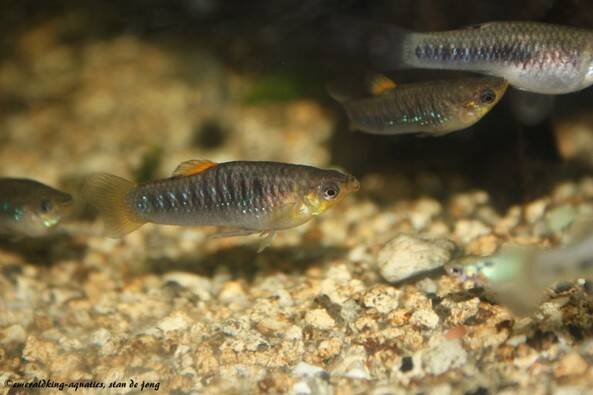
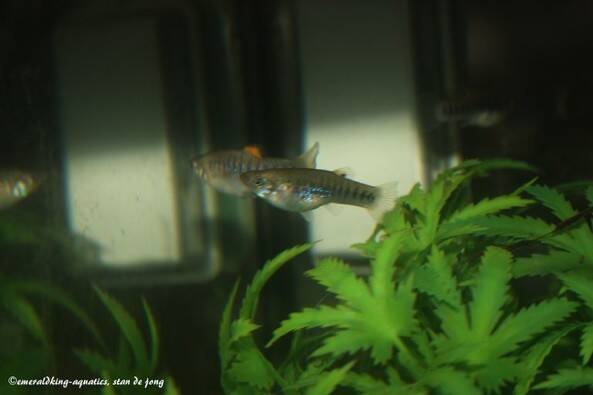
The problem with these limias is that they will show their gender pretty late. So, it might be that a female looking specimen will show the male characteristics when it's already at an adult size. And be aware that also females of this Limia species won't show a gravid spot.
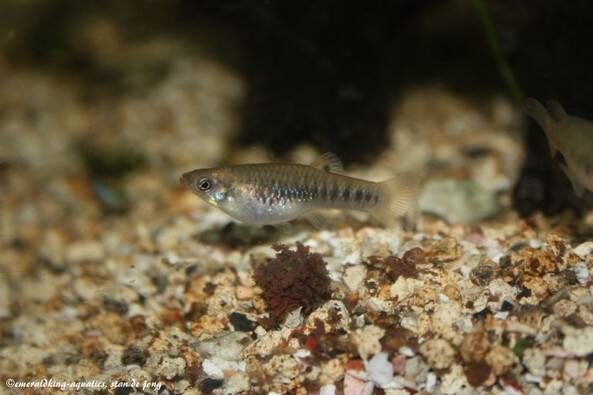
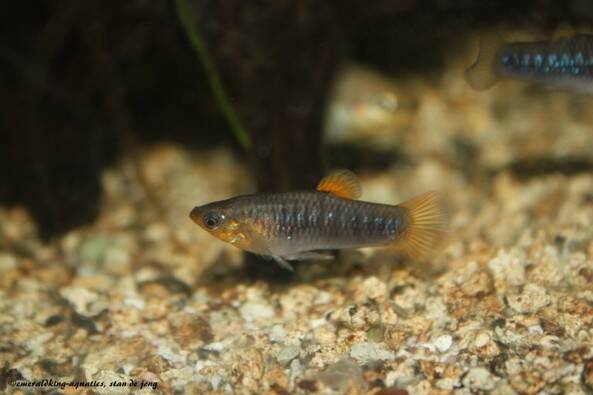
Above: An adult female (photo left) and an adult male (photo right).
A dominant male will also show an orange chest as shown above (photo right).
Back in 2015, a single blonde female was born. A natural mutation within the colony of Limia tridens. This is quite rare.
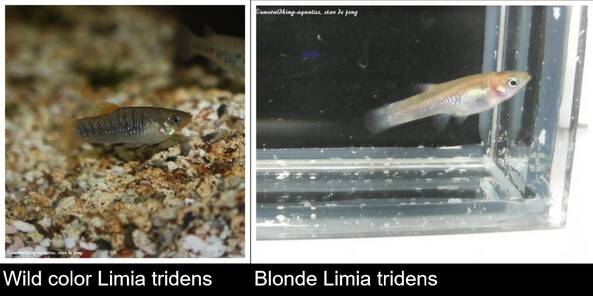
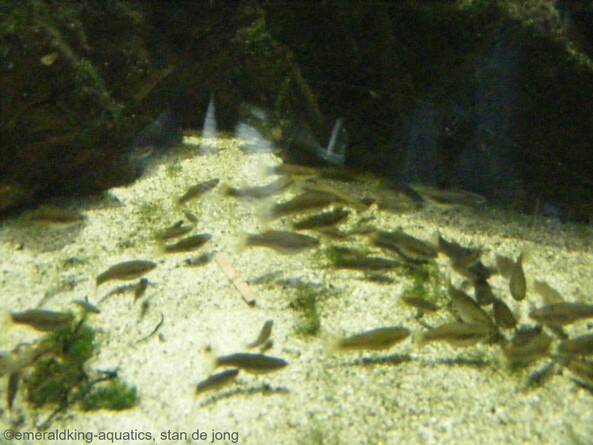
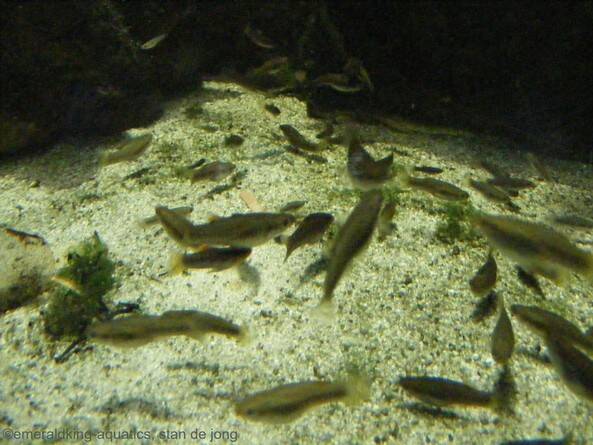
Above: A colony of Limia tridens at the Berliner zoo., Germany.
Limia sp. Tiger (nowadays Limia islai)
A Limia strain which is also occurring in Lake Mirgoane on south-western Haiti on Hispaniola just like Limia nigrofasciata and Limia garnieri is the tiger limia (Limia sp. Tiger).
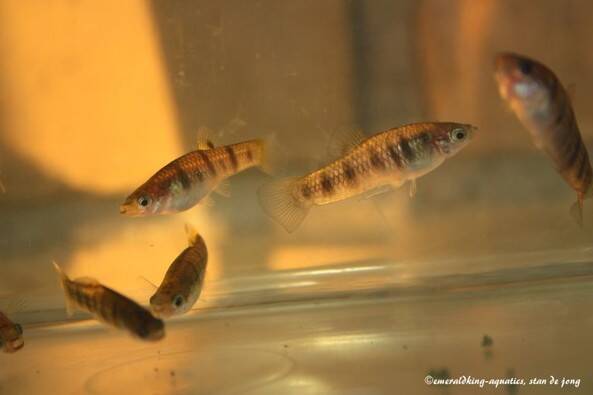
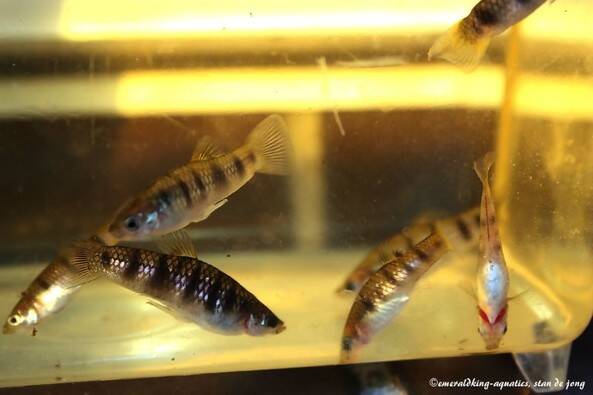
It does resemble both L.nigrofasciata and L.garnieri in appearance. But the tiger limia is smaller and once it matures you are able to see the difference in shape in comparison to his two relatives. Unlike its relative L.nigrofasciata, the males of the tiger limias won't get a hump as the male of the L.nigrofasciata.

Above: An adult male (left) and an adult female (right).
Ever since the beginning of the year 2020 the tiger limia was renamed into Limia islai.

